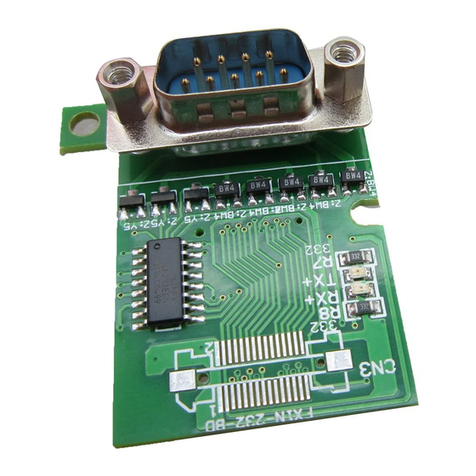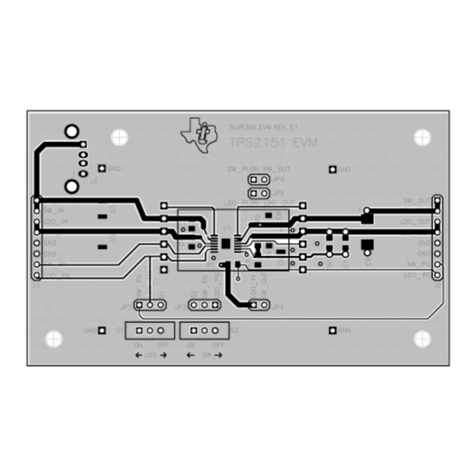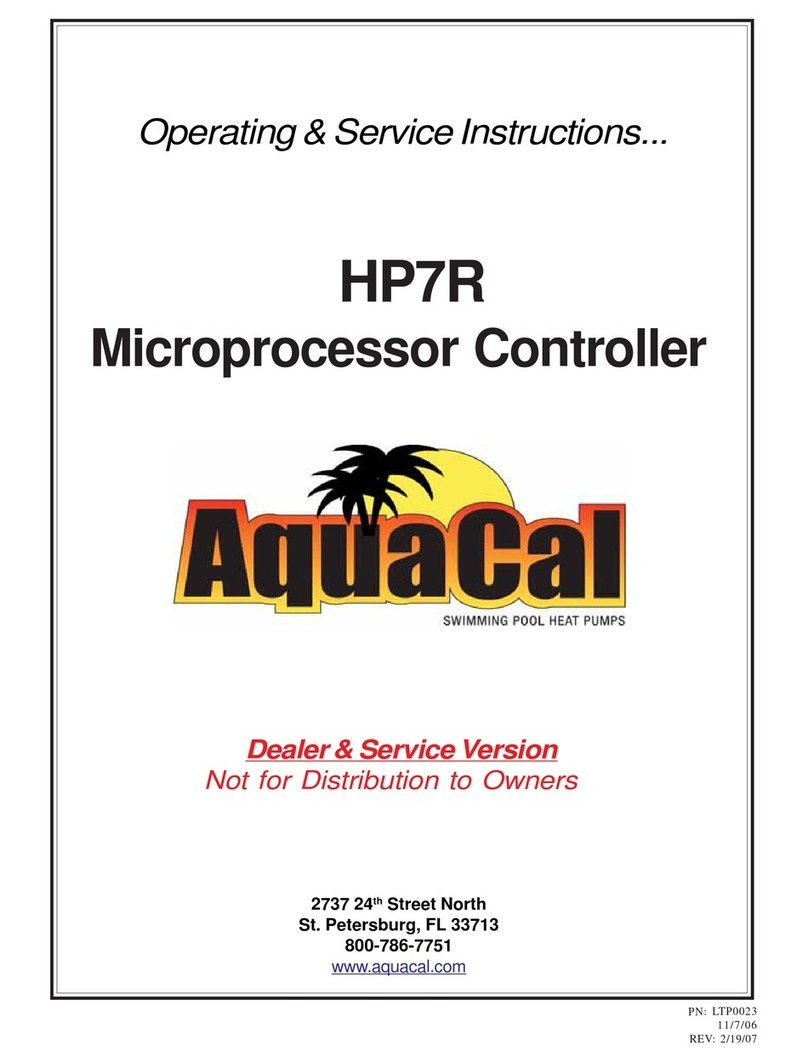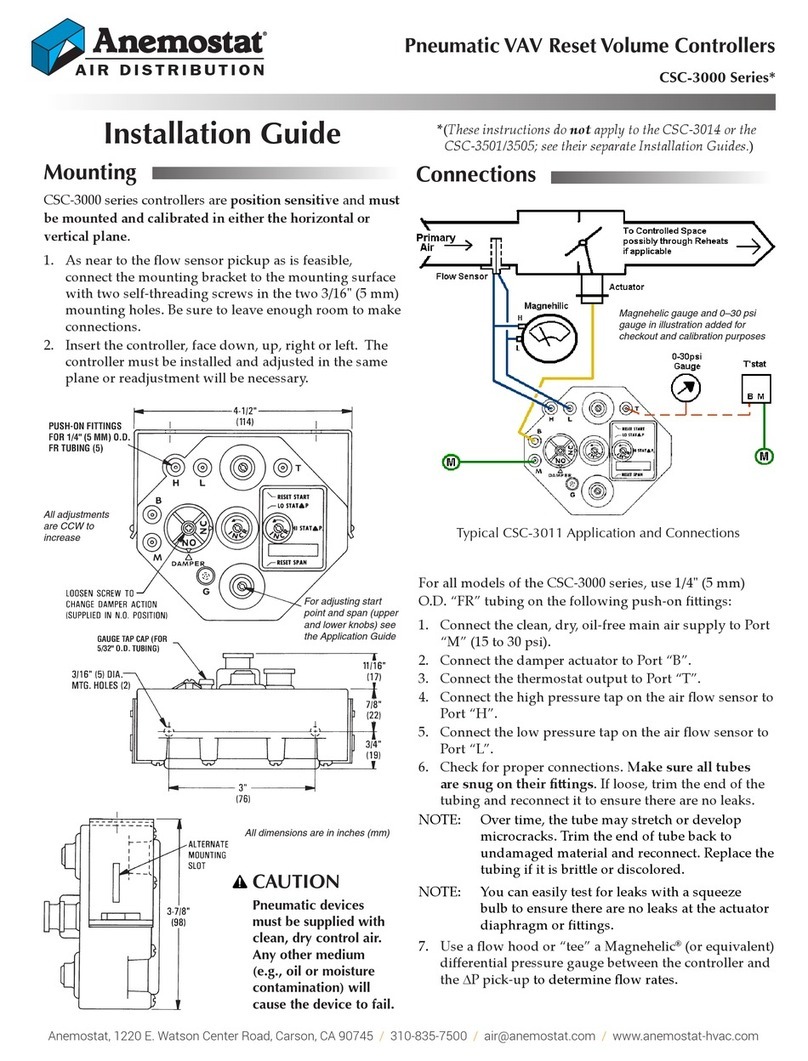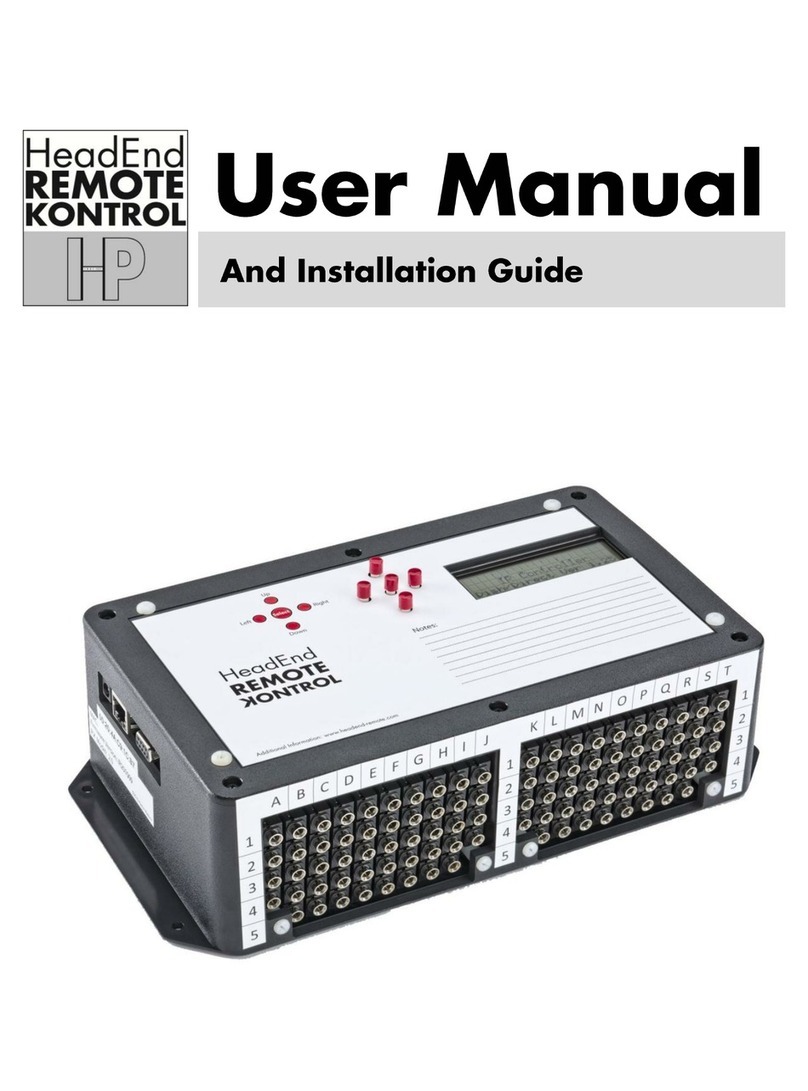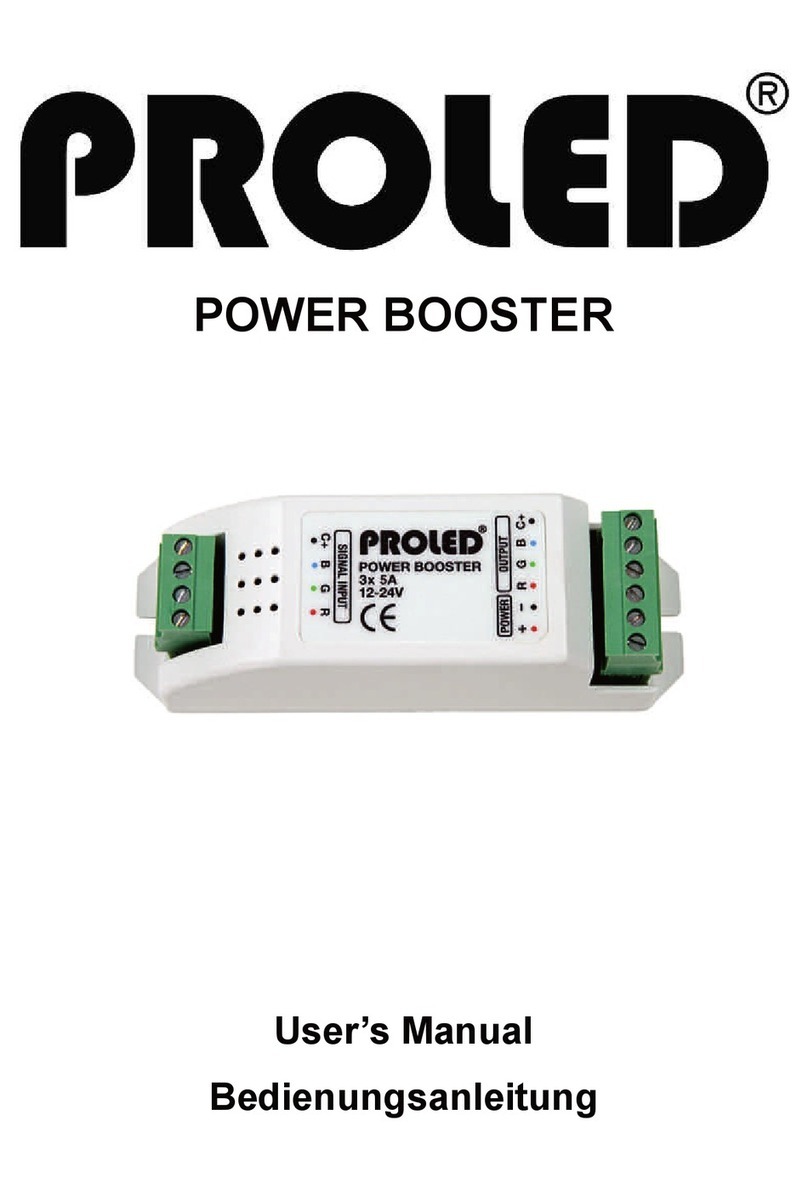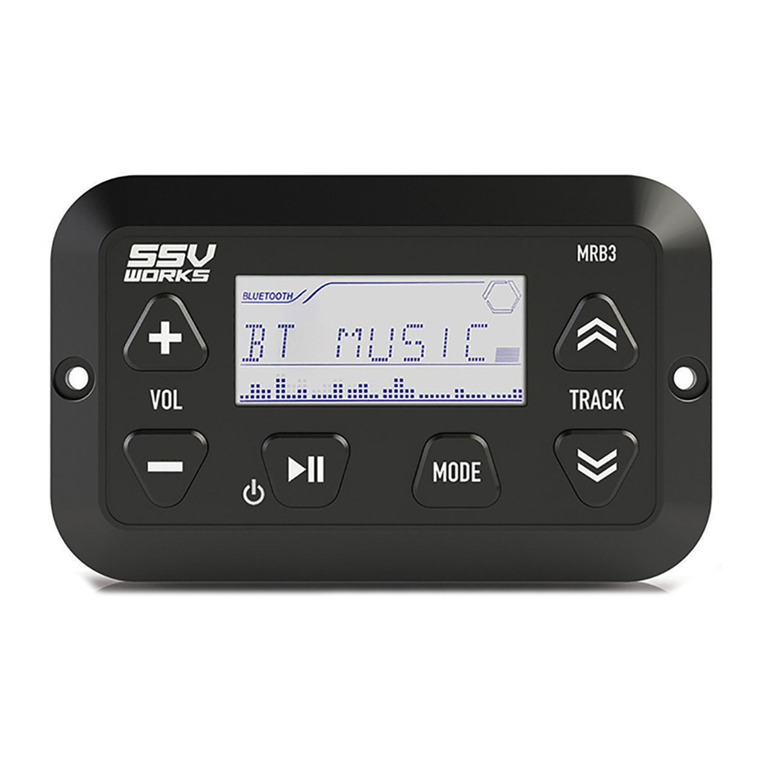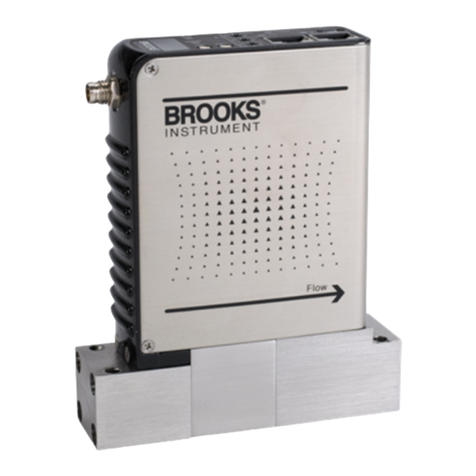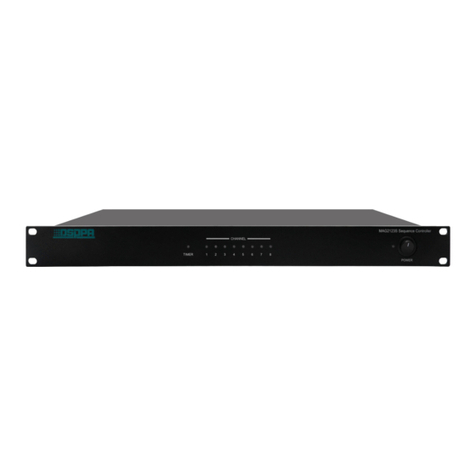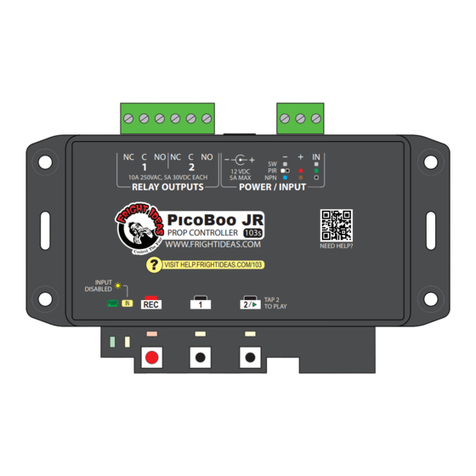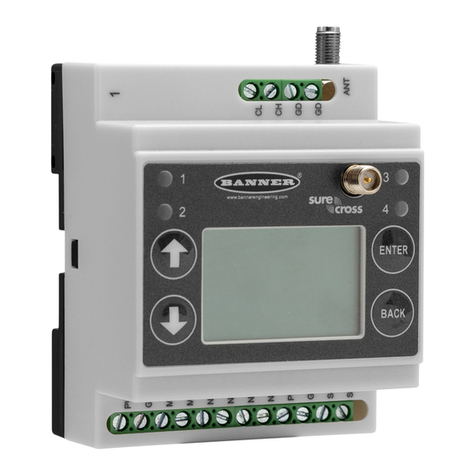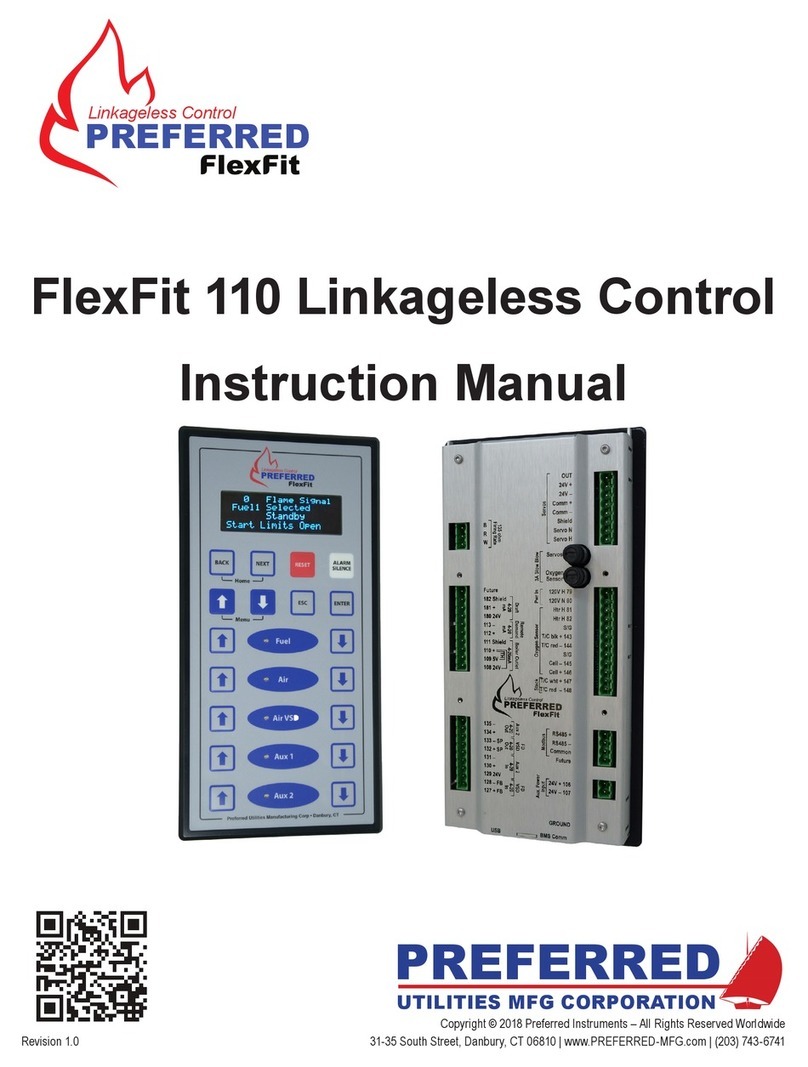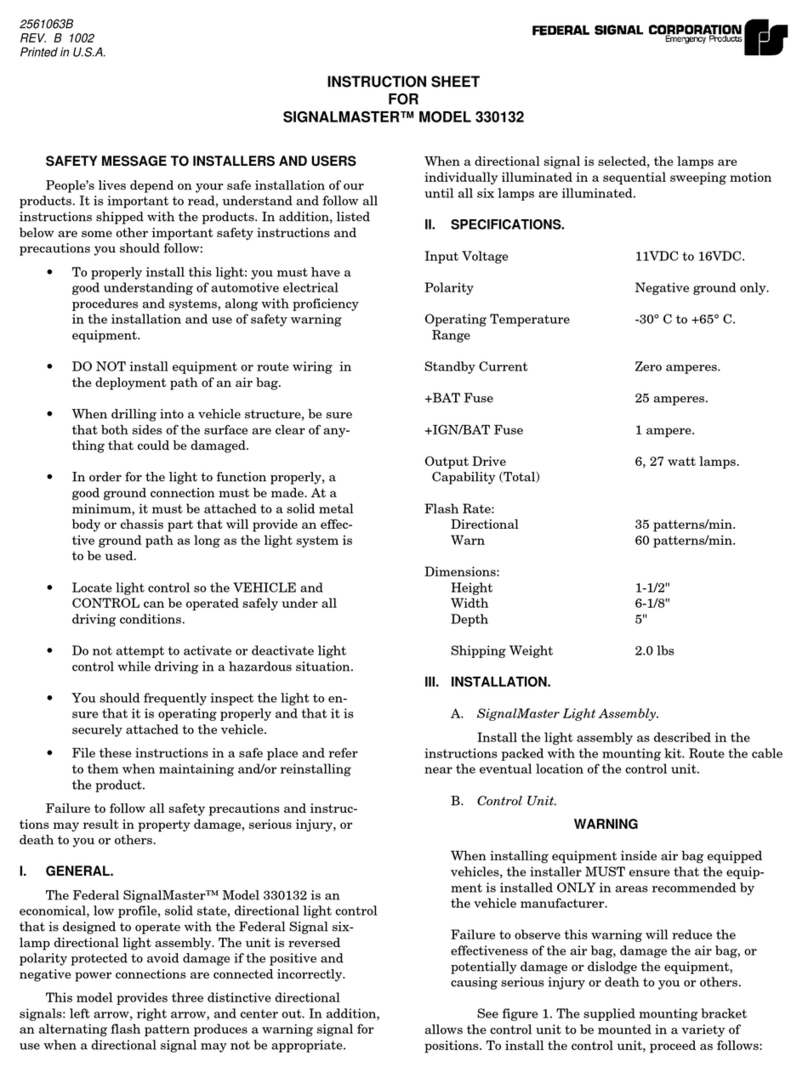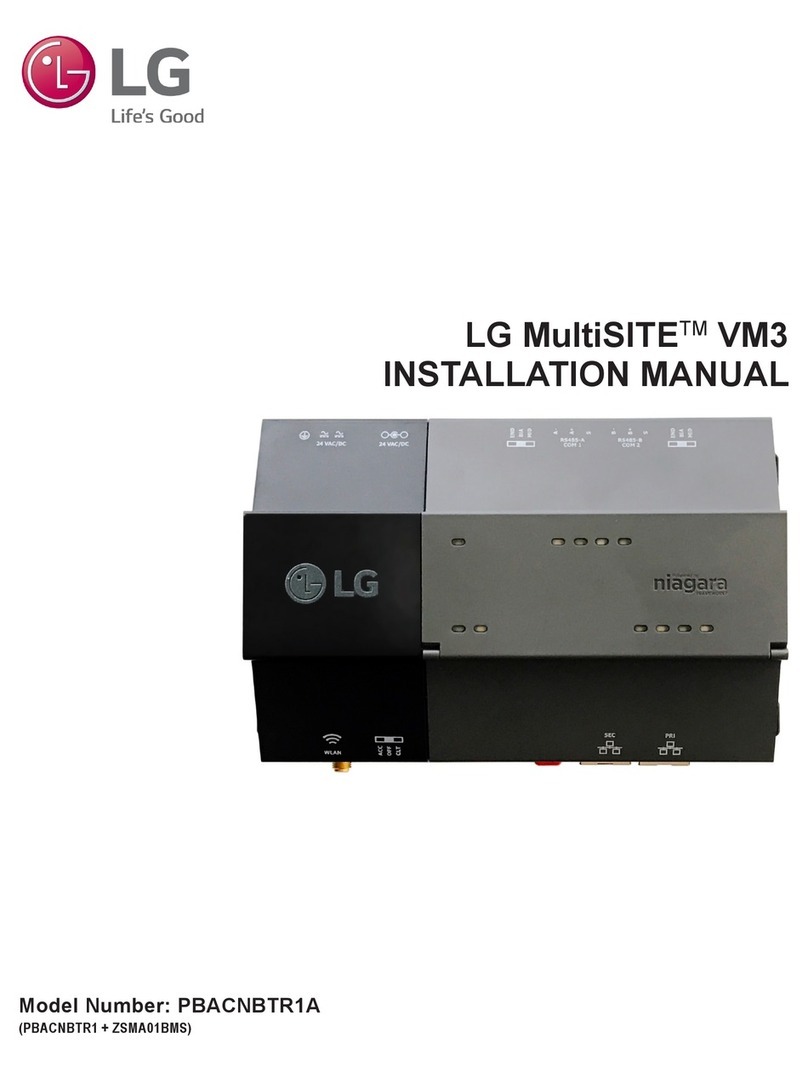E-T-A ControlPlex CPC12 T Series User manual

User Manual
ControlPlex® Controller CPC12PN

2
1 Table of contents
1 Table of contents 2
2 General information 4
2.1 Safety instructions 4
2.2 Qualified personnel 4
2.3 Use 4
2.4 Delivery state 4
3 General description 5
3.1 Design of the entire system 6
3.2 Dimensions CPC12xx-Tx 7
3.3 Status indication and terminals 7
3.3.1 Terminals for voltage supply 8
3.3.2 PROFINET interfaces with integral switch, connection sleeve XF1, XF2 8
3.3.3
ETHERNET interface, connection sleeve X1 8
3.3.4 LED status indication 9
4 Mounting and installation 9
4.1 Mounting of the system 9
5 Operating modes of the CPC12 bus controller 10
5.1 Operating mode: Start-up mode 10
5.2 Operating mode: System error mode 10
5.3 Operating mode: Configuration error mode 10
5.4 Operating mode: Stand-alone mode 10
5.5 Operating mode: Slave mode 10
5.5 Operating mode: Firmware update mode 10
6 Basic functions of the entire system 11
6.1 Internal cycle times 11
6.2 Hot swap of circuit protectors 11
6.3 About the additional Ethernet interface 11
6.3.1 Web Server 11
6.3.2 Default IP address -X1 11
6.3.3 User name and password 11
6.3.4 OPC UA 11
6.3.5 MQTT 11

3
7 Communication via PROFINET 12
7.1 ControlPlex®device model 12
7.2 GSDML file 14
7.3 I&M data (identification & maintainance) 14
8 Cyclical I/O data 15
8.1 Module I/O data CPC12 controller 15
8.2 Module power distribution 15
8.2.1 Submodule total current 15
8.2.2 Submodule circuit protectors 16
9 Non-cyclical data 18
9.1 CPC12 controller 19
9.1.1 Device information CPC12 controller 19
9.1.2 Configuration data CPC12 controller 20
9.1.3 Action commands CPC12 controller 20
9.1.4 Dynamic information CPC12 controller 21
9.2 Circuit protectors / channels 21
9.2.1 Device parameters for one channel 22
9.2.2 Device information for one channel 23
9.2.3 Configuration data for one channel 24
9.2.4 Event message for one channel 25
9.2.5 Action commands for one channel 25
9.2.6 Diagnostic data for one channel 26
10 Appendix 28
10.1 List of pictures 28

4
2 General information
2.1 Safety instructions
This manual points out possible danger
for your personal safety and gives
instruction how to avoid property damage.
The following safety symbols are used to
draw the reader's attention to the safety
instructions included in this manual.
Danger!
Danger to life and limb unless the following
safety precautions are taken.
Warning
Danger to machinery, materials or the
environment unless the following safety
precautions are taken.
Note
Information is provided to allow a better
understanding.
Caution
Electrostatically sensitive devices (ESD).
Devices must exclusively be opened by
the manufacturer.
Disposal guidelines
Packaging can be recycled and should
generally be brought to re-use.
2.2 Qualified personnel
This user manual must exclusively be
used by qualified personnel, who are able
– based on their training and experience –
to realise arising problems when handling
the product and to avoid related hazards.
These persons have to ensure that the
use of the product described here meets
the safety requirements as well as the
requirements of the presently valid
directives, standards and laws.
2.3 Use
The product is part of a continuous
enhancement process. Therefore there
might be deviations between the product
in hand and this documentation. These
deviations will be remedied by a regular
review and resulting corrections in future
editions. The right to make changes
without notice is reserved. Error and
omissions excepted.
2.4 Delivery state
The product is supplied with a defined
hardware and software configuration.
Any changes in excess of the documented
options are not permitted and lead to
liability exclusion.

5
3 General description
The customers' demands for a constant
quality of the produced goods, while at
the same time increasing the quantities,
pose great challenges to the mechanical
and plant engineering industry. At the
same time, globalisation is creating
worldwide value flows and production
chains. Machines and plants that had still
been regionally organised just a few years
ago are now networked worldwide. These
developments extend the requirements
of machine and plant control as well as
of the installed components. An ever
growing number of measuring data need
to be recorded, analysed, evaluated and
saved. This increases the transparency
of the manufacturing process and thus
system availability.
The DC 24 V power distribution is also
affected by this development. The
control voltage supplies all essential
components of the machine or system.
These include, besides programmable
control units, for example actuators and
sensors. Therefore, the control voltage
has a special importance in the entire
production process. Its availability and
stability is crucial for system availability
and quality of the produced goods. The
REX system is equal to the task. It consists
of electronic circuit protectors which are
connected with each other via an integral
connector arm without requiring additional
components. Power supply is via the
EM12 supply module which can supply
the circuit protectors with max. 40 A. The
new CPC12 bus controller additionally
allows access to all system-relevant data
of the superordinate control systems. This
can be via the the PROFINET interface as
well as via an additional Ethernet interface.
The CPC12 connects the circuit
protectors with the superordinate control
unit. Its internal ELBus®interface realises
the connection with the REX intelligent
circuit protectors1. The CPC12 allows
entire access on all required parameters
of the electronic circuit protectors, their
control unit and the visualisation of the
device data.
This is made available at the field bus
interface for the superordinate control
unit and also at the third RJ45 interface
for further connection. Thus the system
offers a fully parameterisable protection of
the DC 24 V circuits and ensures selective
overcurrent protection of sensors and
actuators, decentralised peripheral
sub-assemblies etc. and there supply
lines.
1To simplify presentation and explanation, the naming of intelligent circuit breakers is limited to the system designation REX. This
designation includes the REX12D and REX22D circuit breakers.

6
3.1 Design of the entire system
The CPC12 bus controller is the centre piece of the ControlPlex®
system. It allows consistent communication between the
electronic circuit protectors and the superordinate control level,
connected HMIs and even into the Cloud.
The PROFINET interface to the superordinate control unit is
implemented as two RJ45 connectors. It allows connection of the
required control unit with the ControlPlex®system. This enables
display, analysis as well as diagnosis of the individual measuring
values. In addition, it allows control of the individual electronic
circuit protectors. An additional Ethernet interface enables direct
access of the integral web server of the bus controller. Service
staff can thus directly access the system on site. Moreover,
access via the connected infrastructure of the company is enables
and thus global access. OPC UA and MQTT allow transmission
of all measuring values and status information independently of
the control system, e.g. to a superordinate cloud application.
Revised measuring values of all electronic circuit protectors
are also forwarded to the automation system. This enables the
user to have unrestricted access to the safety-relevant functions
even in the event of an interruption. Any occurring failures will
be detected quickly and can be remedied without delay. The
ControlPlex®system effectively reduces system downtimes
and significantly increases the productivity.
The CPC12 bus controller allows connection of up to 16 double
channel electronic circuit protectors:.
fig. 1: System overview
EM12-
T00-000
DC24V
40A
AC
4230-T110
CPU
HMI HMI
CPU
CPC12PN-
T1-001
US1
US2
ERR
RUN
EM12-T00
-100-LINE
DC24V
40A
PM12-T01
-00-GND
DC24V
20A
EM12-T00
-000-GND
DC24V
40A
EM12-T00
-300-GND
DC24V
40A
DC24V
REX12D-
TA2-107
DC24V
REX12D-
TA2-107
REX12D-
TA1-107
DC24V
10A 2A
2A 6A
6A
PM12-T01
-00-LOAD
DC24V
20A
M M
4
7
Schaltnetzteil
Power supply
to next control
cabinet or to
additional supply
to next control
cabinet or to
additional supply

7
3.2 Dimensions CPC12xx-Tx
3.3 Status indication and terminals
fig. 2: Dimensions CPC12
fig. 3: Status indication and terminals
CPC12xx-
Tx-xxx
80
23
7.5
98.5
92
snap-on socket for rail EN 60715-35x7,5
(not included)
Ensure space for plugs and cables!
Label e.g. from
Phoenix Contact
ZBF-21
connector
arm
X1 – Ethernet interface
XF1 – PROFINET interface
XF2 – PROFINET interface
XD1 + DC24V
XD1 – 0V
XD1 – FE
IP-Reset
LED – LNK
LED – ACT
LED – LNK
LED – ACT
LED – LNK
LED – ACT
XD1 – supply terminal
LED – US1
LED – US2
LED – BF
LED – SF

8
3.3.1 Terminals for voltage supply
Supply XD1
Voltage ratings: DC 24 V(± 5 % → 18 ... 30 V)
Rated current: typically 75 mA
Terminal design: 3 x push-in terminals (+/0V/ FE)
Max. cable cross section rigid 0.2 – 1.5 mm2
flexible with wire end ferrule (without plastic sleeve) 0.2 – 1.5 mm2
flexible with wire end ferrule (with plastic sleeve) 0.2 – 0.75 mm2
cable cross section AWG24 – AWG16 str.
stripping length 8 mm
Using a supply voltage outside the indicated operating range can cause malfunctions or destruction of the device.
The voltage supply of the CPC12 bus controller is guaranteed via the supply module and the related connector arm.
The use of the line terminals is optional.
3.3.2 PROFINET interfaces with integral switch, connection sleeve XF1, XF2
XF1 Connection to bus system PROFINET
Type: RJ45
When wiring and connecting to the bus system PROFINET the installation and wiring regulations of the PROFIBUS User Organisation
(PNO) have to be observed.
XF2 Connection to bus system PROFINET
Type: RJ45
When wiring and connecting to the bus system PROFINET the installation and wiring regulations of the PROFIBUS User Organisation
(PNO) have to be observed.
3.3.3
ETHERNET interface, connection sleeve X1
X1 Connection with the bus controller CPC12 and the integral web server
Type: RJ45

9
3.3.4 LED status indication
Visual status indication by means of multicoloured LED
Visual signalling of RJ45 interfaces
LED LNK LED ACT
Operating mode Indication of operating mode
LED US1 LED US2 LED BF LED SF
Bus error green green red off
System error green green off red
Firmware update 1) off off off off
No actuator voltage n.a. red n.a. n.a.
No connected device or bus error n.a. orange blinking: n.a. n.a.
PROFINET device localisation n.a. n.a. n.a. red blinking
Operating mode Indication of operating mode
Link available green
No link available off
Operating mode Indication of operating mode
Act available orange blinking
No Act available off
4 Mounting and installation
4.1 Mounting of the system
The preferred mounting position of the ControlPlex®system is horizontal.
GERMANY
fig. 6: Installation drawing
fig. 4: Display status LEDs
fig. 5: Display LEDs RJ45 connectors
n.a. = not applicable

10
5 Operating modes of the CPC12 bus controller
5.1 Operating mode: Start-up mode
The CPC12 bus controller is initialised by applying the supply
voltage. The device will carry out internal programme memory
tests and self test routines. During this time a communication
via the interfaces is not possible.
5.2 Operating mode: System error mode
If a failure is detected during the self test routines, the bus
controller will change into operating mode System Error. This
operating mode can only be discontinued by way of re-starting
the device and it prevents the data exchange via the interfaces.
If the bus controller is in this operating mode, it is unable to
control the electronic circuit protectors and these will stay in the
stand-alone mode (overcurrent protection).
5.3 Operating mode: Configuration error
mode
If there are no valid or invalid configuration data available in
the bus controller, it will change into this operating mode. This
operating mode only allows non-cyclical data exchange. Cyclical
data exchange is prevented. Leave this operating mode upon
receipt of the correct slot parameters and
configuration data.
5.4 Operating mode: Stand-alone mode
In this operating mode there is none connection between the
bus controller and the superordinate control unit. In this case the
CPC12 bus controller will automatically adopt the control and
parameterisation of the electronic circuit protectors, because
all required data sets are saved within the CPC20. By means of
the web server, the electronic circuit protectors, their status and
parameters can be accessed via the Ethernet interface interface.
It is thus possible to change e.g. parameter data of the various
electronic circuit protectors. After connection is built up to ion
level is remedied, this operating mode will be left and the control
unit will take over control again as master. If during this time a
parameter was changed while there was no communication, this
will be signalled to the superordinate control unit. In this case
the user can correspondingly define the control behaviour and
it can be programmed in the programmable control unit. This
allows the user to select a reaction meeting his requirements.
5.5 Operating mode: Slave mode
In this operating mode, the CPC12 is involved in a PROFINET
system. Communication to the CPC12 bus controller works
faultlessly and the controller can be addressed and controlled
by the superordinate control unit. Should the communication
fail, this has no influence on the protective function of the circuit
protectors. The behaviour of the bus controller with simultaneous
use of a field bus interface and of the web server interface can
be determined by means of the configuration of the device in
the superordinate control unit.
It can be pre-selected there that Ethernet interface or the Web
Server are granted either only reader access or reader and
editor access. In the event of editor access, changes of the
parameterisation of the electronic circuit protectors can be
carried out in parallel to the field bus system. These parameter
changes will then be advised to the superordinate control system
and can be adopted by it or also overwritten. The user can select
the behaviour accordingly.
5.5 Operating mode: Firmware Update
Mode
The devices are supplied with a software programmed according
to their functionality. If the functions of the devices are extended,
they will be added by firmware update. It is therefore necessary to
carry out a firmware update if the new functionality shall be used.

11
6 Basic functions of the entire system
6.1 Internal cycle times
The cycle time of the system depends on the number of
electronic circuit protectors connected and on the internal baud
rate. The internal baud rate can be 9600 or 19200 baud. The
baud rate is only changed to 19200 when all connected circuit
protectors support this function. The baud rate is signalled in the
cyclical data in the »Status Controller«. The current cycle time
can be retrieved with the non-cyclical access to the »dynamic
information of the CPC12«.
The cycle time in the event of 16 circuit protectors and an internal
baud rate of 9600 baud is approx. 480 ms for the cyclical data, i.e.
30 ms per unit. A window of 130 ms is kept free for non-cyclical
data. In total, this is a max. cycle time of 610 ms.
An internal baud rate of 19200 baud reduces the cycle time for
the cyclical data to some 240 ms, i.e. 15 ms per unit. A window
of 100 ms is kept free for non-cyclical data. In total, this is a max.
cycle time of 340 ms.
6.2 Hot swap of circuit protectors
If a new circuit protector is added to an existing application, it
will automatically be parameterised with the available parameters
for address slot. Transmission of the parameters will be without
interruption of the cyclical data exchange between the CPC and
the electronic circuit protector.
6.3 About the additional
Ethernet interface
The additional Ethernet interface (X1) extends the functional
scope of the bus controller. The following functionalities are
provided via this interface.
6.3 1 Web Server
The web server offers the entire scope of measuring data, status
information, parameterisation options an d control function of
the CPC12 bus controller. The parameterisation of the interface
is described separately.
6.3.2 Default IP address -X1
The default IP address of the CPC12 is: 192.168.1.1 The web
server can be reached via this IP address. By pressing the IP
reset button for 3 seconds, the IP address is reset to the default
value.
6.3.3 User name and password
In order to be able to carry out configurations, the user has
to have the required access authorisation. It is defined in user
administration.
The default settings are:
We urgently recommend to individually adjust these
settings upon startup of the device.
6.3.4 OPC UA
This functionality will only be included and described in a later
version.
6.3.5 MQTT
This functionality will only be included and described in a later
version.
User admin
Password: admin

12
7 Communication via PROFINET
7.1 ControlPlex®device model
The power distribution system with CPC12 controller consists of a passive supply module EM12-T00-000-DC24V-40A and up to
16 intelligent circuit protectors of the REX series. In the SubSlot 2 of the second slot, the maximum number of circuit protectors
can be configured. This configuration will influence the length of the cyclical data.
The power distribution system ControlPlex®uses the following PROFINET model:
Bus interface SubSlot 1:
I/O data
CPC12PN
2 bytes input
2 bytes output
SubSlot 1:
Total current
2 bytes input
SubSlot 2:
I/O Data
circuit
protectors
min. 10 bytes input
max. 160 bytes input
min. 2 bytes output
max. 32 bytes output
Slot 0 Slot 1 Slot 2
DAP CPC12PN REX
fig. 7: Device model

13
PROFINET CPC12PN
Slot 0 The PROFINET interface requires the Device Access Point (DAP) in slot 0. The DAP serves as an accesspoint for
the communication with the master and is described in the GSD file. It does not have to be configured further.
Slot 1 Slot 1 represents the CPC12PN controller. SubSlot 1 holds the firmly assigned module withe the I/O data of the
CPC12PN. This module contains 2 input and output bytes which are described in more detail in the chapter
8.1 Module I/O Data CPC12 controller.
This slot is firmly installed and cannot be removed.
Slot 2 Slot 2 represents the power distribution by means of the circuit protectors connected to the CPC12PN.
SubSlot 1: total current of all connected channels. This module is firmly assigned.
SubSlot 2: Status, control bytes and measuring values of the circuit protectors. In this subslot, you can
configure the number of circuit protectors by module selection (from the GSDML file). The process data image
of the PLC holds 10 input bytes and 2 output bytes for each circuit protector, which are described in chapter
8.2 Module power distribution. It is thus possible to determine the quantity of process data cyclically to be
exchanges depending on the application.
If less circuit protectors are connected than configured, th einput data of the not available circuit protectors
are marked as »not available«.
If more circuit protectors are connected than configured, these cannot be energised by the PLC.
The CPC12 allows configuration of 1 to max. 16 circuit protectors.
fig. 8: Communication properties

14
7.2 GSDML file
The IODD file is in the download area of the E-T-A website and can be downloaded there.
7.3 I&M data (identification & maintenance)
The following I&M data are made available by the CPC12 controller:
I&M data length data set meaning
VENDOR_ID 2 bytes I&M0 manufacturer identification value manufacturer ID 696
ORDER_ID 20 bytes I&M0 Part number
SERIAL_NUMBER 16 bytes I&M0 serial number
HARDWARE_REVISION 2 bytes I&M0 revision index
SOFTWARE_REVISION 4 bytes I&M0 firmware version
REVISION_COUNTER 2 bytes I&M0
PROFILE_ID 2 bytes I&M0 profile ID 0000h
PROFILE_TYP 2 bytes I&M0 profile-specific coding 0005h
IM_VERSION 2 bytes I&M0 version of the I&M data 0101h
IM_SUPPORTED 2 bytes I&M0 supported data sets 001Eh
TAG_FUNCTION 32 bytes I&M1 Unambiguous marking
throughout the plant
TAG_LOCATION 22 bytes I&M1 Installation area
INSTALLATION_DATE 16 bytes I&M2 installation date and time
YYYY-MM-DD HH:MM
DESCRIPTOR 54 bytes I&M3 comments
fig. 9: I&M data

15
8 Cyclical I/O data
Depending on the selected Module in slot 2. sub-slot 2, a varying number of data bytes are exchanged in the cyclical data traffic.
The GSDML file made available for the projecting tool allows the related configuration, the system recognises all permitted con-
figurations and processes the cyclical data defined in the projection.
The module I/O data CPC12 controller is firmly pre-set in slot 2 and cannot be removed because the input bytes hold vital failure
and diagnostic information as described in the following.
8.1 Module I/O data CPC12 controller
The 2 bytes input data contain the following global error and diagnostic messages.
This module holds 2 bytes output data which are meant for the later system extensions and which cannot currently be used.
8.2 Module power distribution
This module holds the total current in sub-slot 1 and the cyclical input and output data of the circuit protectors in sub-slot 2.
8.2. 1 Submodule total current
The sub-module total current supplies a standardised 16 bit value with the calculated total current of all circuit protectors in a slot
(2 byte input data).
The sub-module does not have output data.
The measuring value is indicated as follows:
byte Type range Description
status controller 0 HighByte
1 LowByte
UInt16 0xFFFF bit 0 = no configuration data available
bit 1 = invalid configuration data
bit 2 = connected device type is not compatible to configuration
bit 3 = reserve
bit 4 = command buffer overflow
bit 5 = no communication to ELBus®1
bit 6 = reserve
bit 7 = reserve
bit 8 = reserve
bit 9 = CPC temporary error
bit 10 = CPC hardware error
bit 11 = ELBus®1
communication speed: 0=9600 Baud, 1=19200 Baud
bit 2 = reserve
bit 3 = reserve
bit 4 = reserve
bit15 = writing access via web server deactivated = 1, allowed = 0
byte Type range Description
Total current 0 HighByte
1 LowByte
UInt16 0 ... 65535 A standardised 16-bit-value with a resolution of 10 mA is made
available.
Example for calculation of the measuring value:
value (1320)/ 100 =^13.20 Amps
fig. 10: Cyclical diagnostic data CPC12
fig. 11: Total current

16
8.2. 2 Submodule circuit protectors
Each circuit protector has up to two channels. The input and output data are always transmitted for both possible channels.
Depending on the number of the configured circuit protectors, in this submodule, 10 bytes input data will be exchanged with the
status of the channel, the load current and the load voltage as well as 2 bytes output data for controlling the circuit protector. It
the circuit protector used has only one channel, the status of the second channel is marked as not available (0xFF) and the load
current and the load voltage are set to 0.
Input data circuit protectors:
Design of the input bytes per circuit protector is as follows:
byte type range description
Status channel 0 byte 0 ... 255 0xFF (255) =^no device available or wrong configuration
bit 0 = load output ON
bit 1 = short circuit
bit 2 = overload
bit 3 = low voltage
bit 4 = reserve
bit 5 = reserve
bit 6 = limit value current
bit 7 = event / or button pressed
»True« means the status is active.
Load current
channel 1
1 HighByte
2 LowByte
UInt16 0 ... 65535 A standardised 16-bit-value with a resolution of 10 mA is made
available.
Example for calculation of the measuring value:
value (150)/100 =^1.50 Amps
Load voltage
way 1
3 HighByte
4 LowByte
UInt16 0 ... 65535 A standardised 16-bit-value with a resolution of 10 mV is made
available.
Example for calculation of the measuring value:
value (2512)/100 =^25.12 Volt
Status channel 2 5 byte 0 ... 255 0xFF (255) =^no device available, wrong configuraiton or 1-chan-
nel device used
bit 0 = load output ON
bit 1 = short circuit
bit 2 = overload
bit 3 = low voltage
bit 4 = reserve
bit 5 = reserve
bit 6 = limit value current
bit 7 = event / or button pressed
»True« means the status is active.
Load current
channel 2
6 HighByte
7 LowByte
UInt16 0 ... 65535 A standardised 16-bit-value with a resolution of 10 mA is made
available.
Example for calculation of the measuring value:
value (150)/100 =^1.50 Amps
Load voltage
way 2
8 HighByte
9 LowByte
UInt16 0 ... 65535 A standardised 16-bit-value with a resolution of 10 mV is made
available.
Example for calculation of the measuring value:
value (2512)/100 =^25.12 Volt
fig. 12: Input data circuit protector

17
Output data circuit protectors:
Design of the output bytes per circuit protector is as follows:
Sample configuration:
In the sub-module circuit protectors, 8 REX with 16 channels are configured. This results in 80 byte input bytes for status information
and measuring values as well as 16 byte output data.
Addressing of the output data is corresponding to the REX sequence.
circuit protector 1: channel 1.1 control input byte address[0]
circuit protector 1: channel 1.2 control input byte address[1]
circuit protector 2: channel 2.1 control input byte address[2]
circuit protector 2: channel 2.2 control input byte address[3]
circuit protector 3: channel 3.1 control input byte address[4]
…….
Addressing of the input data data is corresponding to the REX sequence.
circuit protector 1: channel 1.1 status: address [0], load current: address [1..2], load voltage: address [3..4]
circuit protector 1: channel 1.2 status: address [5], load current: address [6..7], load voltage: address [8..9]
circuit protector 2: channel 2.1 status: address [10], load current: address [11..12], load voltage: address [13..14]
circuit protector 2: channel 2.2 status: address [15], load current: address [16..17], load voltage: address [18..19]
…….
byte type range description
Control
channel 1
0 byte 0 ... 255 bit 0 = load output ON/OFF
bit 1 = reset load output (only responds to rising edge 0 -> 1)
bit 2 = reserve
bit 3 = reserve
bit 4 = reserve
bit 5 = reserve
bit 6 = reserve
bit 7 = reserve
»True« means the status is active.
Control
channel 2
1 byte 0 ... 255 bit 0 = load output ON/OFF
bit 1 = reset load output (only responds to rising edge 0 -> 1)
bit 2 = reserve
bit 3 = reserve
bit 4 = reserve
bit 5 = reserve
bit 6 = reserve
bit 7 = reserve
»True« means the status is active.
fig. 13: Output data circuit protector

18
9 Non-cyclical data
Non-cyclical PROFINET services allow exchange of more data with the CPC12 controller and the circuit protectors. Access also
allows direct addressing of a circuit protector. PROFINET - index and slot number are used for this. For reading and editing CPC12
data, slot 1 is used. Slot 2 is used for reading and editing the of circuit protectors. The access to the circuit protectors is divided
into channels. Two channels are provided per circuit protector.
The PROFINET index is set up as follows:
The non-cyclical access to the data of CPC12 is divided as follows:
range index digit description
Channel no. on ELBus ® Decimal numbers 103 and 102Number of channel to be queried.
Valid value range: 01… 32.
Parameter index Decimal numbers 101 and 100The parameter index defines the data range and
the data type of the data to be read/written.
Valid value range: 01… 10.
slot parameters
Index
channel
number
number of
data bytes
reading (R)
writing (W) description
1 02 0 19 R Device information of CPC12 controller
(see chapter 9.1.1).
1 03 0 5 R/W configuration data of CPC12 controller
(see chapter 9.1.2).
1 05 0 1 W action commands for all channels and the CPC12 controller
(see chapter 9.1.3).
1 06 0 4 R dynamic information of CPC12 controller
(see chapter 9.1.4).
02 01
parameter index
channel no. (1-32)
fig. 14: set-up of PROFINET index
fig. 15: Division of parameter index CPC12

19
The non-cyclical access to the data of circuit protectors and/or channels is divided as follows:
slot
parame-
ters
Index
channel
number
number of
data bytes
reading (R)
writing (W) description
2 01 01… 32 2 R/W device parameters of a channel
(see chapter 9.2.1).
2 02 01… 32 19 R device information of a channel
(see chapter 9.2.2).
2 03 01… 32 2 R/W configuration data of a channel
(see chapter 9.2.3).
2 04 01… 32 1 R event message of a channel
(see chapter 9.2.4).
2 05 01… 32 1 W action commands for a channel
(see chapter 9.2.5).
2 06 01… 32 22 R diagnosis data of a channel
(see chapter 9.2.6).
fig. 16: Division of parameter index channel
fig. 17: Device information CPC12
9.1 CPC12 controller
The non-cyclical parameters of the controller are described in the following chapters.
9.1.1 Device information CPC12 Controller
The device information of the controller consists of 19 bytes.
Access: slot = 1, channel = 0 and parameter index = 2
All device information with possible conditions are described in the following table.
byte type range description
Circuit breaker
p/n
0 HighByte
1 LowByte
UInt16 0 ... 65535 16405 = CPC12PN-T1
This list may be extended by future controllers.
Hardware version 2 HighByte
3 LowByte
UInt16 0 ... 65535 holds the hardware version of the installed product
Internal assembly
order numbers
4 HwHb
5 HwLB
6 LwHB
7 LwLB
UInt32 0 ... 4294967295 holds the assembly order number
of the installed product
Production
facilities number
8 HwHb
9 HwLB
10 LwHB
11 LwLB
UInt32 0 ... 4294967295 holds the production facilities number
of the installed product
Serial number 12 HwHb
13 HwLB
14 LwHB
15 LwLB
UInt32 0 ... 4294967295 holds the serial number of the installed product
Software version
(major.x.x)
16 byte 0 ... 255 holds the major software version of the installed product
Software version
(x.minor.x)
17 byte 0 ... 255 holds the major software version of the installed product
Software version
(x.x.build)
18 byte 0 ... 255 holds the build software version of the installed product

20
byte type range description
Action commands 0 byte 0 ... 255 116 = reset trip counter
118 = reset device parameters to factory settings including
CPC121)
131 = back to box 2)
132 = Adjust device configuration to connected device type
(cf. chapter 9.2.3)
192 = reset statistics minimum values
196 = reset statistics maximum values
220 = reset statistics mean values
Other values will not be accepted.
byte type range description
Configuration
data of the CPC
0 byte 0 ... 255 bit 0 = writing via web server permitted. Allows changing of
parameters via the server even when the bus connec-
tion is active.
Bit 1
True: In the event of a fieldbus interruption, the status of the
load outputs is maintained.
False: In the event a fieldbus interruption, all load outputs
will be set to the status OFF.
bit 2 = power saving mode, the LEDs will be dimmed for
power reduction.
bit 3 = reserve
bit 4 = reserve
bit 5 = reserve
bit 6 = reserve
bit 7 = reserve
If not described otherwise, »True« means that the function is
active.
Control
commands
disable ELBus®
1 on CPC channel
1 ... 16
1 HighByte
2 LowByte
UInt16 0 ... 65535 Each bit represents a channel.
(bit 0 = channel 1; bit1 = channel 2 ...)
If the bit is set, this means that the channel cannot be
switched on or off via the control unit.
Control
commands
disable ELBus®
1 on CPC channel
17 ... 32
3 HighByte
4 LowByte
UInt16 0 ... 65535 Each bit represents a channel.
(bit 0 = channel 17; bit1 = channel 18 ...)
If the bit is set, this means that the channel cannot be
switched on or off via the control unit.
Reserve 5 HighByte
6 LowByte
UInt16 0 reserve
Reserve 7 HighByte
8 LowByte
UInt16 0 reserve
fig. 18: Configuration data CPC12
fig. 19: Action commands CPC12
9.1.2 Configuration data CPC12 controller
The device configuration data for the controller consists of 5 bytes.
Access: slot = 1, channel = 0 and parameter index = 3
All configuration data with possible conditions are described in the following table.
9.1.3 Action commands CPC12 Controller
The action commands of the controller consist of 1 byte. All action commands being sent to the CPC12 carry out the action for
all channels.
Access: slot = 1, channel = 0 and parameter index = 5
Action commands with possible conditions are described in the following table.
Other manuals for ControlPlex CPC12 T Series
1
This manual suits for next models
1
Table of contents
Other E-T-A Controllers manuals
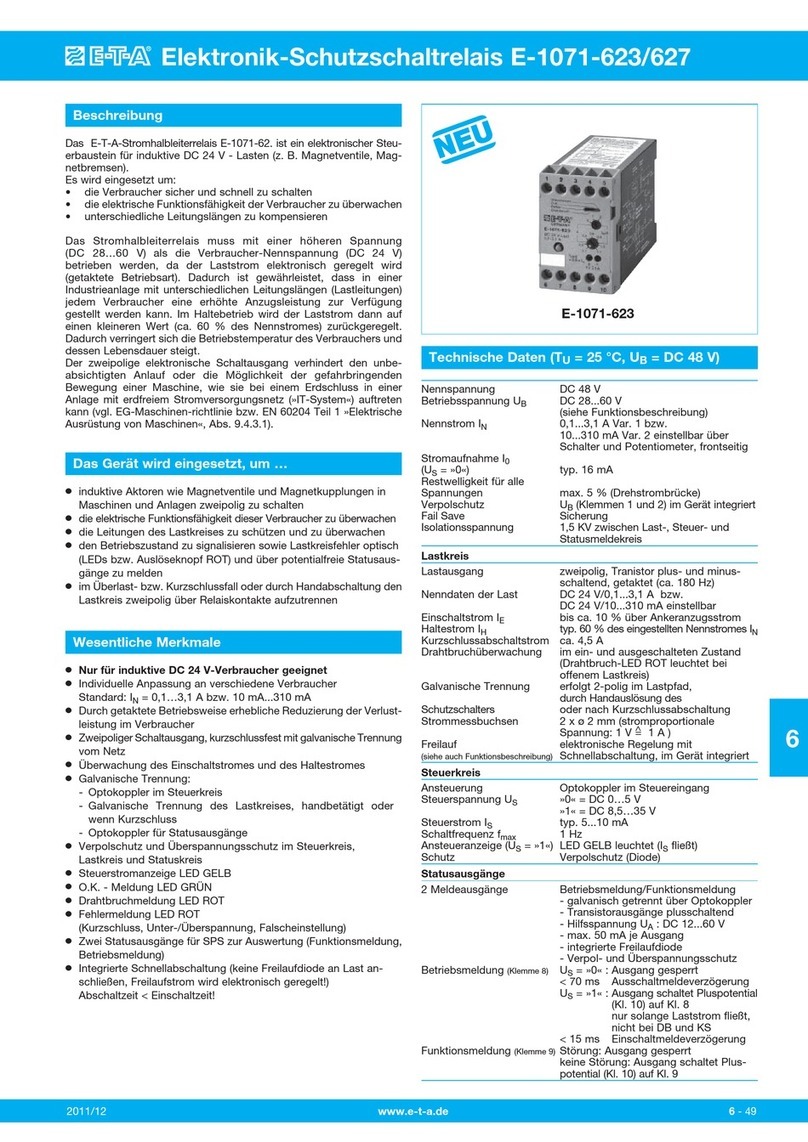
E-T-A
E-T-A E-1071-623 User manual
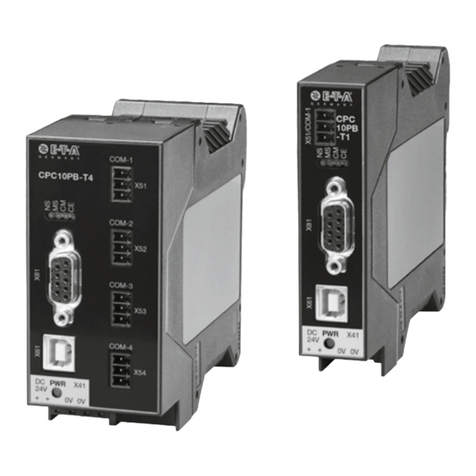
E-T-A
E-T-A Control Plex CPC10PB-T1 User manual
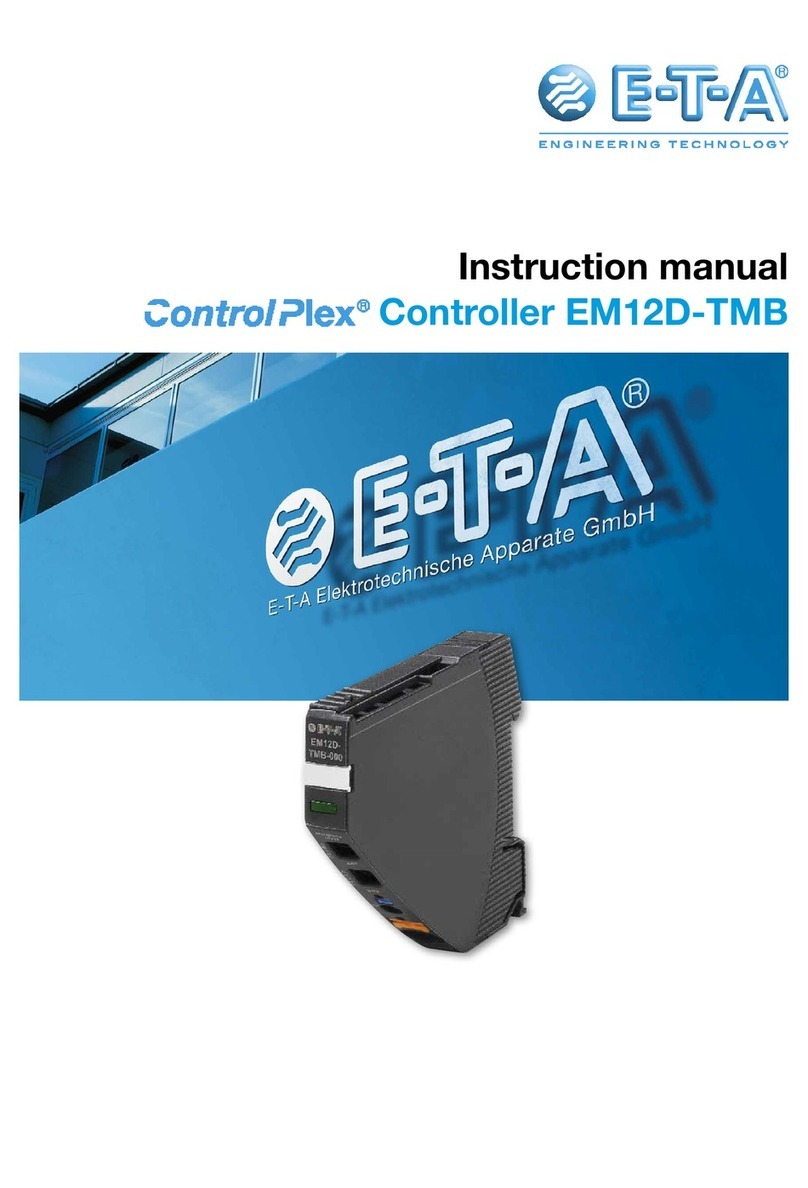
E-T-A
E-T-A EM12D-TMB Series User manual

E-T-A
E-T-A ControlPlex CPC12 User manual
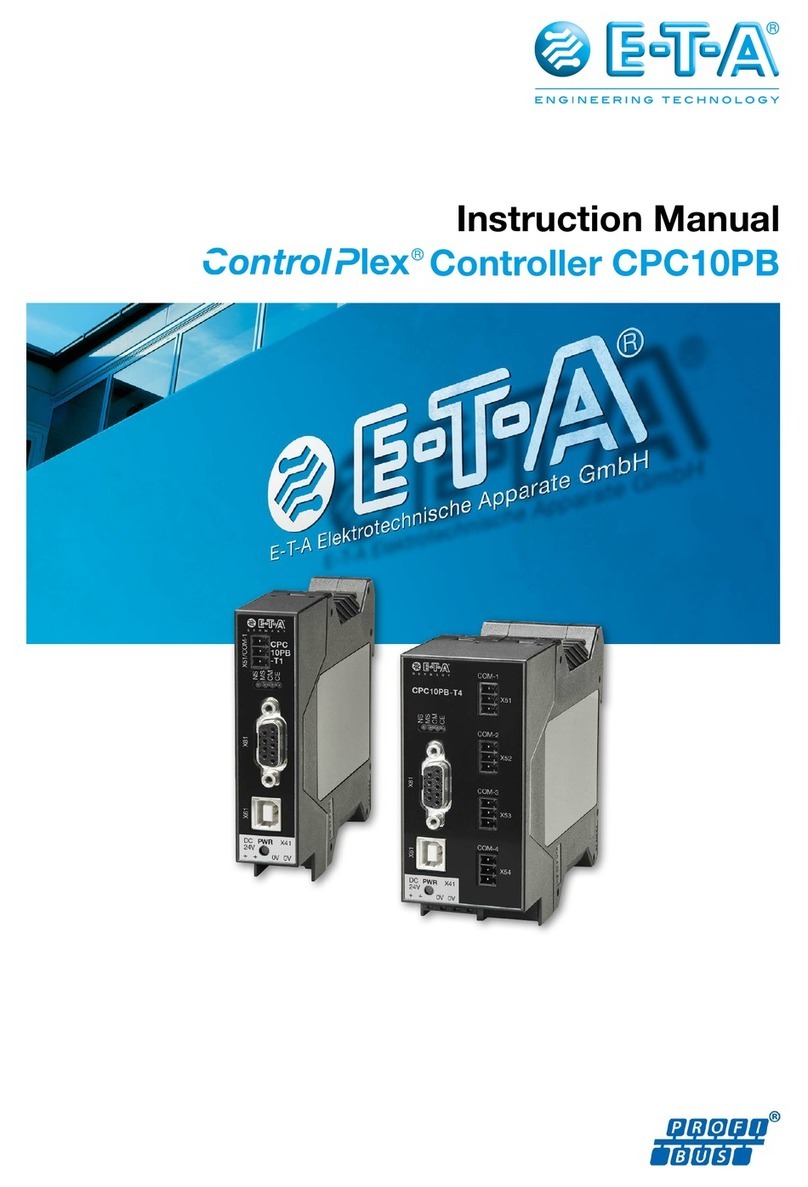
E-T-A
E-T-A ControlPlex CPC10PB User manual
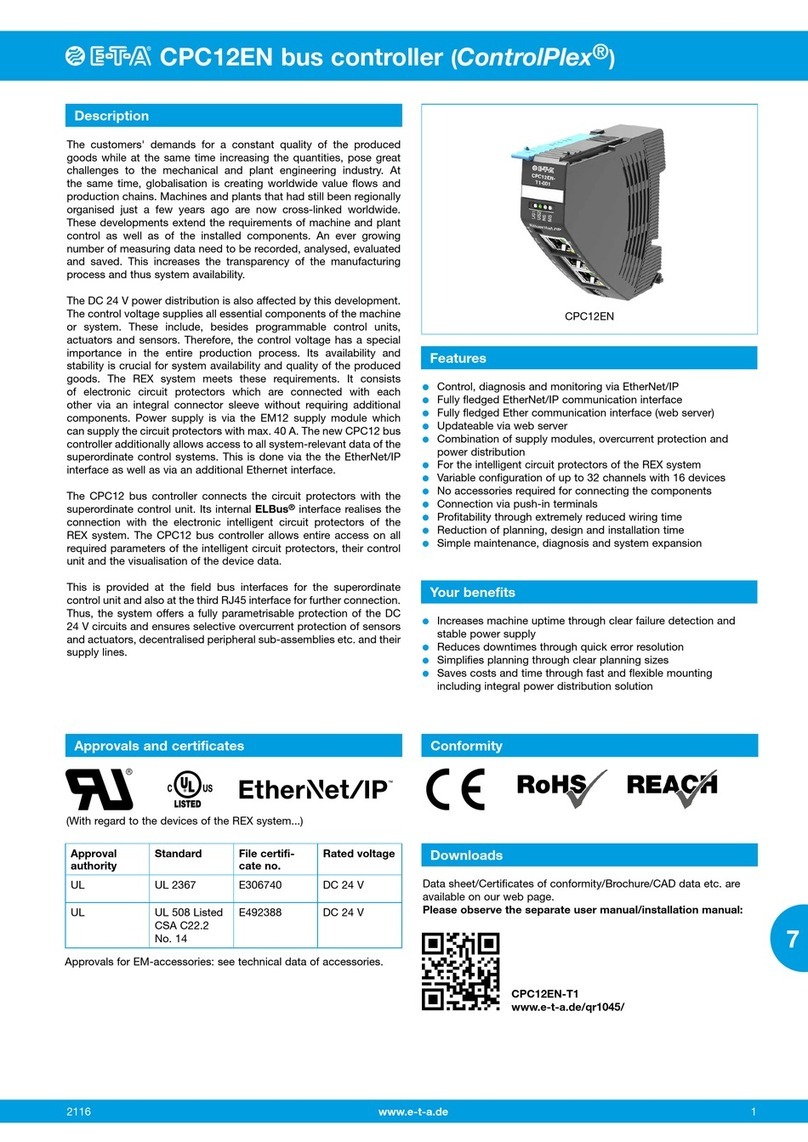
E-T-A
E-T-A EtherNetIP ControlPlex CPC12EN User manual
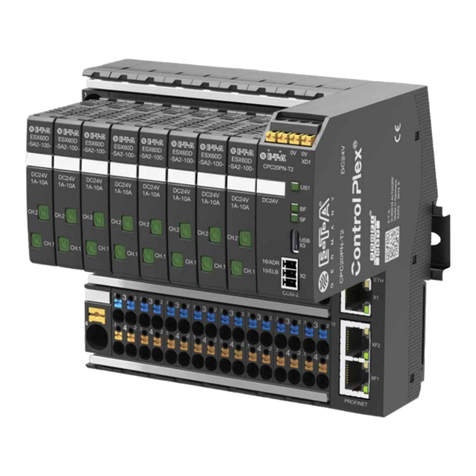
E-T-A
E-T-A ControlPlex CPC20PN User manual

E-T-A
E-T-A ControlPlex CPC12 T Series User manual
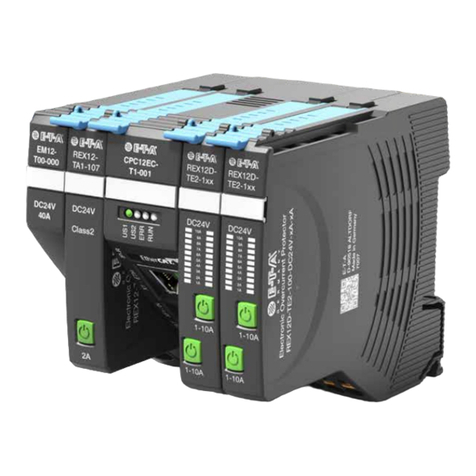
E-T-A
E-T-A ControlPlex CPC12 User manual
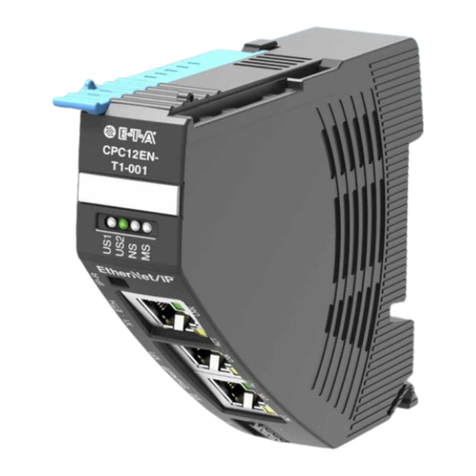
E-T-A
E-T-A EtherNetIP ControlPlex CPC12EN User manual
